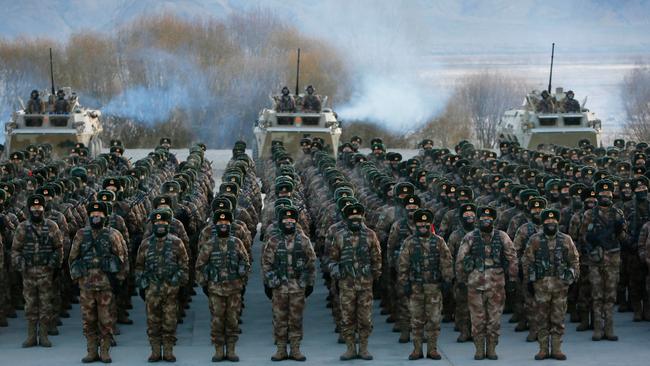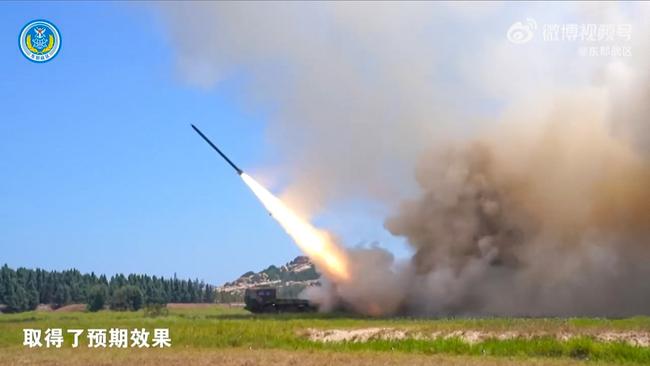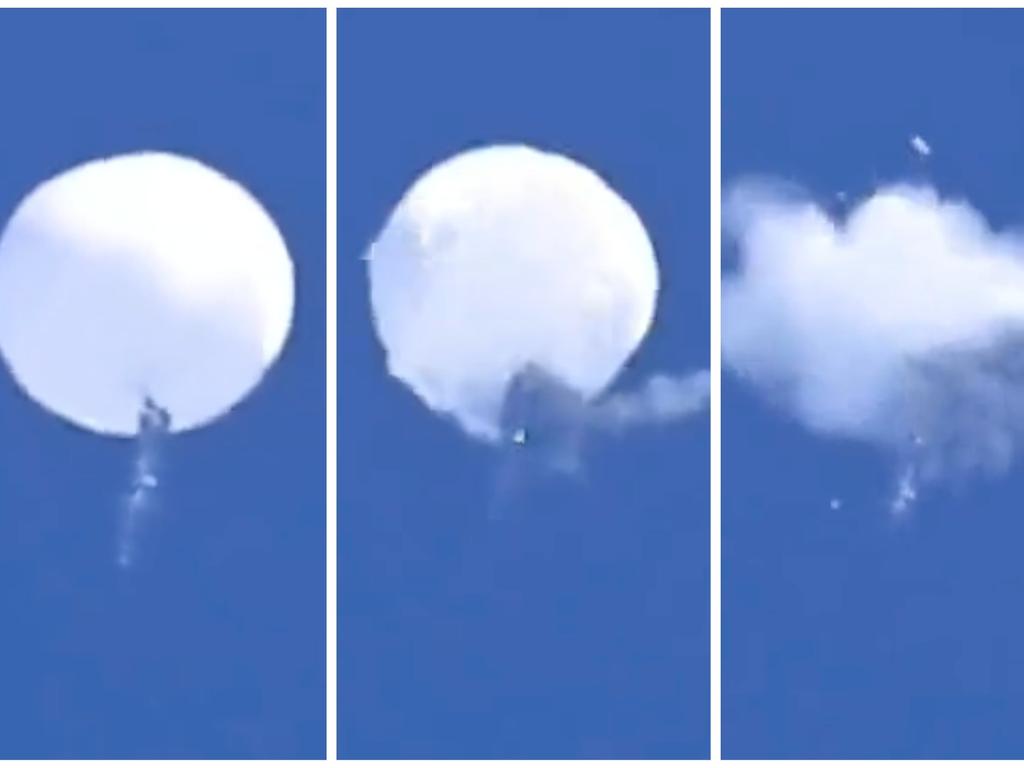China has more ICBM launchers than US, American military reports
The US military’s announcement to congress is fuelling the debate about how Washington should respond to Beijing’s nuclear build-up.

The US military has notified congress that China now has more land-based intercontinental-range missile launchers than the US, fuelling the debate about how Washington should respond to Beijing’s nuclear build-up.
“The number of land-based fixed and mobile ICBM launchers in China exceeds the number of ICBM launchers in the United States,” the commander of the US Strategic Command, which oversees nuclear forces, wrote the Senate’s and House’s Armed Services Committees on January 26.
The notification comes as the US is facing the challenge of deterring Russia’s substantial nuclear forces as well as China’s growing nuclear arsenal. US lawmakers are involved in an increasingly heated debate about how best to counter Beijing, including the Pentagon’s response to the Chinese surveillance balloon that recently traversed the US and hovered over Montana, where a portion of the American military’s ICBM arsenal is deployed.

The US, which is modernising all three legs of its land, sea and air based nuclear arsenal, has a much larger nuclear force than China.
Many of China’s land-based launchers still consist of empty silos, according to US officials and experts outside government. The Strategic Command also notified Congress that the US has more intercontinental-range missiles based on land, and more nuclear warheads mounted on those missiles, than China.
The command’s notifications also don’t include submarine-launched missiles and long-range bombers, where the US has a decided advantage, US officials say.
Republican lawmakers, however, have cited the ICBM launchers as a portent of the scale of China’s longer-range ambitions and are urging the US to expand its own nuclear forces to counter the Russian and Chinese forces.

“China is rapidly approaching parity with the United States,” said congressman Mike Rogers, the Alabama Republican who chairs the House Armed Services Committee. “We cannot allow that to happen. The time for us to adjust our force posture and increase capabilities to meet this threat is now.”
Mr Rogers said that limits on long-range forces set by a treaty between the U.S. and Russia, known as New START, are inhibiting the US from building up its arsenal to deter Russia and China. That accord, which China isn’t party to, is set to expire in 2026.
Arms-control proponents say rather than trying to surpass China’s and Russia’s nuclear forces, the US has more to gain by trying to preserve treaty limits with Russia and by attempting to draw Beijing into a discussion of nuclear-arms control.
They also note that the US is undergoing a major modernisation of its nuclear forces that will give Washington the option of adding more warheads to its missiles and bombers should China’s build-up proceed faster than anticipated in the 2030s.

“It’s in our national interest to keep the Russians under the New START limits. We need to complete our nuclear modernisation according to plan, not pile on new requirements,” said Rose Gottemoeller of Stanford University, who negotiated the landmark treaty for the US
Mr Rogers raised the notification on Tuesday morning at a House Armed Services Committee hearing on China and US national defence, which focused mostly on Taiwan, the recent incursion by a Chinese surveillance balloon and other concerns.
The Biden administration has acknowledged that the challenges posed by nuclear-armed adversaries are complex and wants the US to deal with them using a mix of arms control arrangements and upgraded nuclear forces.
“By the 2030s the United States will, for the first time in its history, face two major nuclear powers as strategic competitors and potential adversaries,” the Pentagon said in a policy document known as the Nuclear Posture Review last year.

An immediate challenge for the administration is preserving the New START treaty. The Biden administration said last week that Moscow is violating the accord by refusing to allow on-site inspections. Russian officials said Moscow is still adhering to the limits on warheads, missiles, bombers and launchers.
China, which has rejected arms-control talks with the US, is on track to field about 1500 nuclear warheads by 2035, up from an estimated operational stockpile of more than 400 in 2021, according to a Pentagon report that was released last year.
The growth in China’s nuclear forces has raised concerns that it might use the threat of nuclear escalation to dissuade Washington from rushing to aid Taiwan during a crisis. The US has refrained from providing Ukraine with long-range weapons or sending US forces to the country because it wants to avoid a direct clash with a nuclear-armed Russia.
The growth in China’s nuclear forces also raises the risk, which most experts believe is currently remote, that any potential conventional conflict between Beijing and Washington could become a nuclear one.
China operates a fleet of mobile ICBM launchers and has about 20 liquid-fuelled, silo-based missiles. It is also building three ICBM silo fields that are intended to house at least 300 modern solid-fuelled missiles.
Researchers have debated whether China plans to fill all of the silos with nuclear-tipped ICBMs, whether some might be left empty or whether some might be filled with conventionally armed systems.
Hans Kristensen of the Federation of American Scientists said commercial satellite images of the Chinese silo fields provide no indication that China’s military has been training to load the new silos with ICBMs or conducting exercises at the silo fields.
“They are building a significant number of silos, but we don’t know how many missiles or warheads they are going to put in them,” Mr Kristensen said.
The working presumption among most US officials, however, is that all of the silos will be filled with nuclear-tipped intercontinental missiles over the next decade or so.
With uncertainty over China’s nuclear plans rising, congress last year passed legislation requiring the Strategic Command to notify lawmakers if Beijing had more ICBM silos, more ICBMs or more ICBM warheads than the US.
The command responded with classified and unclassified versions of the notification to congress. The unclassified version, which came in a letter from Strategic Command leader General Anthony Cotton, didn’t say how the military assesses China will use the silos or how quickly Beijing might fill them with missiles.
The Wall Street Journal




To join the conversation, please log in. Don't have an account? Register
Join the conversation, you are commenting as Logout